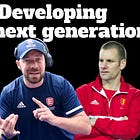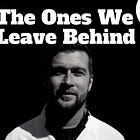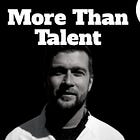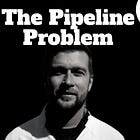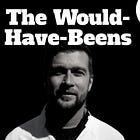Nurturing Tomorrow's Hockey Stars: A European Blueprint for Next-Gen Development
Even Luke Skywalker was a late bloomer...
We've all seen the cinematic narrative unfold: the chosen one, prophesied to bring balance or defeat the dark lord, is identified early. They often possess an innate talent, a unique connection to the force, or an unparalleled athletic gift. Think Anakin Skywalker, the boy with the highest midi-chlorian count, earmarked for greatness from childhood. He was a prodigy, destined for the Jedi Council and beyond. Yet, as the story twists, it's often the less-obvious hero, the "late bloomer" or the one who wasn't initially seen as exceptional, who ultimately fulfills a deeper destiny. Luke Skywalker, the humble farm boy from a backwater planet, seemingly devoid of the dazzling initial prowess of his father, ultimately becomes the true hero through perseverance, learning, and the right guiding influences.
This analogy resonates deeply with the discourse on next-generation development in European field hockey. For too long, like the Jedi Council, we may have focused on identifying the "Anakin Skywalkers" – the early bloomers, the visibly talented – and in doing so, risked overlooking or even hindering the "Luke Skywalkers" who emerge later, shaped by different experiences and a steadfast commitment. The challenge for experienced coaches in Europe is to recognize that raw talent is merely a starting point. What truly shapes an athlete and a team, particularly in our complex, dynamic sport, is the environment, the culture, and the intention behind every developmental choice.
We’re drawing on insights from leading voices in hockey development, including Great Britain coaches Jon Bleby and Mark Bateman, as well as Rein van Eijk, Head Coach of the Belgian national women’s team and former Head Coach for the U21 Men from Germany. We will explore four critical chapters in nurturing future hockey stars: the role of fun and the pitfalls of early selection, the multifaceted nature of talent development, the power of culture and mindset, and the nuanced timing of performance versus continued growth.
Fun in Hockey & Selection: Keeping the Door Open
"If someone enjoys what they do, they’re more likely to spend time doing it. And the more time someone spends on something, the more likely they are to improve – reinforcing that improvement through sheer volume and joy. That’s where confidence and mastery start to grow." - Rein van Eijk
The foundation of any successful long-term development program is joy. As coaches, our primary goal, particularly with younger players, should be to make it fun and enjoyable, ensuring they want to be there. Rein van Eijk emphasizes that enjoyment leads to repetition, and repetition to growth, forming the bedrock for long-term development and fostering confidence and mastery. Jon Bleby echoes this, stating the importance of getting the basics in place with good facilities, equipment, and staff, but crucially, making it "really fun, make it really enjoyable," with "loads of fun games" to engage everyone early.
However, this foundational principle often clashes with the prevailing approach to selection in high-performance sport. The sources critically examine the widespread practice of early selection, arguing that it often creates a "self-fulfilling prophecy". Instead of truly identifying long-term potential, we frequently select for "readiness" or favor "early bloomers". This means players who mature later or develop at a different pace are often overlooked, not because they lack talent, but because they don't fit the immediate need.
The grave consequence of deselection, especially at a young age, is the loss of access to the very environments that support a player’s growth. This includes fewer sessions with top players, reduced coaching attention and feedback, and limited visibility – effectively shrinking the field of opportunity and making it harder for deselected players to develop. Rein van Eijk states plainly that "once they’re out of the environment, they’re out of the growth loop".
England's approach, as described by Mark Bateman and Jon Bleby, attempts to mitigate this with a notably "open system". This includes 'open assessment days' where players not initially in talent academies can be nominated by club or school coaches. The philosophy is to be "a lot more open. You can come in, you can come out, you can come in, you can come out". They prefer to "include people, make errors, including them than make errors, excluding them". This contrasts with the more club-centered pathways in countries like Germany, Holland, and Belgium, where the players' primary environment is often their club.
Rein van Eijk provides concrete examples of challenging early selection, such as at hockey club Amsterdam where they moved away from early ranking and fixed selections for U14 and U12 teams, focusing instead on broader development, flexible movement between groups, and keeping doors open as long as possible. He also praises the German federation for its decentralized model that allows players to remain in regional systems longer, providing more time for development and fewer premature judgments. This German model involves multiple touchpoints for talent identification, including inter-state championships, national championship finals, and recruitment camps, ensuring a "fuller view of a player's growth curve". They even prevented U16s from playing senior club hockey to protect them physically and mentally from being rushed.
The message is clear: prioritize creating an environment where young players fall in love with the game and are given every chance to develop, without prematurely narrowing the pathway based on early assessments.
Talent Development: Beyond the Surface
"Talent? In my view, is nothing more than a head-start. And that head start can manifest in many different ways... Talent isn’t a person. It’s not who someone is. It’s an attribute" - Rein van Eijk
The sources collectively redefine "talent" as far more than just obvious technical skill or physical gifts. Rein van Eijk posits that talent is a "head-start" – an attribute that can appear as skill acquisition, raw physical superiority, a relentless mental focus, or even a simple urge to win. Crucially, it also encompasses psychological composure, the ability to learn quickly, self-organization, emotional stability, and lifestyle habits like sleep and diet. For team sports, a vital, undervalued talent is the ability to operate within a group, play a role, connect, and elevate others; being a great teammate is "decisive". This broader definition urges coaches to look beyond the "tip of the iceberg" and embrace a more holistic assessment.
A cornerstone of true talent development is the role of struggle. If players only repeat what they already know, they are merely stabilizing, not learning or developing new tools. Learning, particularly in complex team sports like hockey, occurs when players are pushed to solve problems they've never encountered and are placed in "unfamiliar situations". This discomfort and uncertainty are where "deeper shifts happen" and "real growth lives".
So we've got a squad of around 30 players and they're all highly talented players but it's a consistency with which they can deliver their game and our game as a team which will set apart the 18, 19, 20 that get picked for a major championships" - Mark Bateman
To guide this growth, Jon Bleby and Mark Bateman emphasize the importance of Individual Development Plans (IDPs). These plans are shared between coaching staff, players, and other stakeholders, allowing athletes to "own it" and understand their "super strength perspective" and "focus areas improvement". Consistency is a recurring theme, with Jon Bleby stressing "consistency of their performance behaviors" – diligently following S&C programs, technical training, and planning their weeks. He notes that the "very best players are the ones that can just do it week after week after week". The concept of "best players have the best basics" refers to skills that are "consistent and repeatable".
A significant shift highlighted is the increasing importance of physicality in modern hockey. Rein van Eijk unequivocally states: "if you can’t run, you can’t play". Physical robustness has moved from an advantage to a "bare minimum," requiring athletes to handle "repeat high-speed efforts, dynamic directional changes, body contact, pressing, tracking, recovery". Jon Bleby notes a significant improvement in the physical maturity of English players over the past decade, with physical readiness no longer the primary barrier to senior team transition; now, it's more about technical hockey skills.
Despite the focus on individual development, the "Matthew Effect" (where the rich get richer) is a recognized challenge. Players in top environments benefit from superior coaching, facilities, and peer interactions, which compounds their development advantage. The recommended counter-strategy is to "widen the funnel" and keep pathways open longer, providing more checkpoints and second chances to ensure that even those initially outside the elite environment get opportunities to catch up.
Culture & Mindset: The Invisible Hand of Success
"Culture is the how. The way people behave, the standards they hold, the emotional climate they create. That’s what gives talent a real shot." - Rein van Eijk
Culture is not merely a set of written values or mission statements; it is "what you tolerate. What you reinforce. What you repeat". It manifests in "how we respond — how we speak to each other, how honest we are, how consistent we stay". Rein van Eijk emphasizes that culture is "created in the way we behave when no one’s scripting it". This lived reality, rather than surface rituals, defines a high-performance culture.
A critical element of culture is leadership. Coaches, captains, and staff are the primary tone-setters. Rein van Eijk highlights the importance of coaches ensuring their "behaviours don’t always match what we preach". He advocates for servant leadership, characterized by listening, creating space for players to bring their full selves, building trust instead of barking orders, and leading by being consistent in tone, presence, and message. This predictability fosters a "sense of safety," allowing players to focus on their game rather than managing the coach's mood. This includes being calm after mistakes, separating failure from punishment, and allowing players to feel "safe to try". Jon Bleby expresses pride in the strong relationships and consistent messaging between the GB and England coaching programs, noting the absence of "horror stories" from the past where coaches didn't communicate.
Beyond the formal leadership, the sources underscore the vital role of "glue players". These are the individuals who "train hard even when they don’t play," "bring calm," "hold teammates to standards," and "show up fully without needing a spotlight". They are "absolutely central" to team achievement and lift the room when needed most. A great culture also celebrates diversity – not just in background, but in personality, energy, thinking, experience, and role – understanding that "sameness is safe. But difference makes you better".
Mindset is deeply intertwined with culture. Mark Bateman notes that consistency in performance comes from players understanding their game and being able to deliver it. Both coaches discuss the challenge of developing consistency in young players, particularly in performance behaviors like planning their weeks and adhering to S&C programs. Mark highlights the transition period where younger players, often reliant on parents, learn to take control of their own development and planning, noting that "generally the, the better players, the more consistent players will probably accelerate from mum and dad doing everything to them doing everything".
Another crucial, often overlooked, aspect of mindset is sacrifice. Rein van Eijk describes it as an "elementary skill that doesn't show on stat sheets". Elite athletes make a series of choices, prioritizing their development over social activities, demonstrating "compounded effort" and a "daily discipline". This is not just about "trying harder" but about a "long-term identity" and a willingness to "live differently". The story of the Dutch national team player who wasn't in the top youth team but stayed behind to hit "100 more balls" after every session epitomizes this.
Finally, resilience is critical. Rein van Eijk strongly refutes the notion that cutting players builds resilience; instead, it is "elimination". True adversity should be "built within the pathway" and designed into the learning process, supporting reflection and feedback, rather than being used as a test for deselection. This ensures setbacks become "a slope to climb, not a cliff to fall off".
Time to Perform: Balancing Pressure and Potential
"I think perhaps in the past we were guilty of only talking about development and not enough about winning and I think definitely we try and do a good job with both now." - Jon Bleby
While the early stages of development should prioritize enjoyment and broad exposure, the transition to high-performance environments demands a shift towards results-driven outcomes. Jon Bleby notes that junior teams previously might have been "guilty of only talking about development and not enough about winning". Now, there's a conscious effort to do a "good job with both". Mark Bateman emphasizes the importance of junior teams learning "how to win" by playing in high-potential, high-pressure games, which prepares them for the senior level. Experiencing semi-finals and finals in junior tournaments builds crucial calmness and confidence for future Olympic programs.
A key strategy to bridge the gap to senior level is to provide "stretch opportunities". Jon Bleby describes how the best players in the Elite Development Program (EDP) are given opportunities to train with the senior GB/England team at Bisham Abbey, varying in frequency based on their proximity to the senior team. Similarly, Mark Bateman's best U18s get exposure to the EDP. This creates a "nice kind of go up for a bit of stretch and then go back down into your own age group when it, when it's appropriate".
Crucially, the sources advocate for an "open door" policy that extends beyond the U21 age group. Jon Bleby explains the "beauty" of the EDP is that it doesn't "cut it off at under 21," deliberately avoiding "unnecessary kind of like boundaries" and allowing players up to 23 (and even some past Olympians up to 25) to remain involved. This flexible approach, combined with club hockey, offers a "really good combination" for continued development. Rein van Eijk highlights Belgium's model where seven U21 players train full-time with the Red Panthers, integrating them fully into the senior squad environment. This strategy acknowledges that "greatness is rare" and "sometimes it’s buried deep, very deep," often needing "a lot of time" to emerge.
This continuous support system challenges the "self-proclaimed would-have-beens" – individuals who blame external factors for not making it. Rein van Eijk critiques their narratives, arguing that they often "dramatically underestimate what it truly takes to go the distance". Excuses like "I didn't train that much, but I was still really good," "If I hadn't gotten injured," "My coach didn't believe in me," or "Politics kept me out" fail to acknowledge the fundamental requirements of obsession, consistent effort, resilience in the face of injury, earning belief through proof of growth, and making oneself undeniable. While luck and timing play a role, "luck without readiness is a missed opportunity".
Ultimately, the goal is to build athletes who are "robust, not fragile". This means designing pathways that "expect adversity and prepare for it" internally, rather than using deselection as a misguided test of toughness. The argument is to "make the path wider — not the standards lower". The bar for elite performance remains high, but the timeline for development stretches, recognizing that "excellence often emerges late, and true talent doesn't always come pre-packaged".
Conclusion
Just as Luke Skywalker's true potential wasn't immediately apparent like Anakin's, so too must we, as coaches, embrace a more expansive and patient view of talent in European field hockey. The journey from promising junior to senior international is rarely linear and almost never a solitary one. It's a complex tapestry woven from individual effort, the quality of the environment, and the intentionality of the coaching culture. We must move beyond the illusion of always being right about early talent assessments and instead focus on cultivating ecosystems that allow potential to breathe, struggle, and ultimately flourish.
Our role is not to identify a select few "chosen ones" and close the door on the rest. It is to build bridges, keep pathways open, and foster an environment where every player is given the best possible chance to discover their true capabilities. This means valuing enjoyment and long-term development in early stages, recognizing the multi-faceted nature of talent, building strong, transparent cultures, and preparing players for performance through strategic stretch and consistent support.
Three Key Takeaways for Coaches:
Prioritize Joy and Broad, Open Pathways: Fundamentally, ensure that early hockey experiences are filled with fun and engagement to foster a lifelong love for the game. Actively resist the urge for premature, narrow selection, and instead, design systems with "open doors" that allow players to enter and re-enter development environments, acknowledging that talent unfolds non-linearly.
Cultivate Intentional Culture and Mindset: Understand that culture, defined by lived behaviors and consistent leadership, is paramount in transforming potential into performance. Foster psychological safety, value diversity, and help players develop critical mindsets such as self-organization, resilience through struggle, and the often-overlooked willingness to make sacrifices for long-term growth.
Embrace Patience and Continuous Development: Recognize that talent is a multifaceted "head-start" that requires consistent nurturing, including strong physical readiness, repeatable basics, and individual development plans. Provide structured "stretch opportunities" into higher-level environments, but ensure these are balanced with support and feedback, understanding that true greatness often takes time to emerge and requires continuous commitment, not just an initial spark.
By embracing these principles, we can move beyond simply identifying potential. We can actively nurture it, challenge it, and protect it, ensuring that our next generation of European hockey stars are not merely the "chosen ones" identified early, but resilient, well-rounded individuals who, like Luke Skywalker, are truly ready to conquer any challenge the galaxy, or the hockey pitch, throws their way.
Enjoy your hockey,
Sources for the above:






